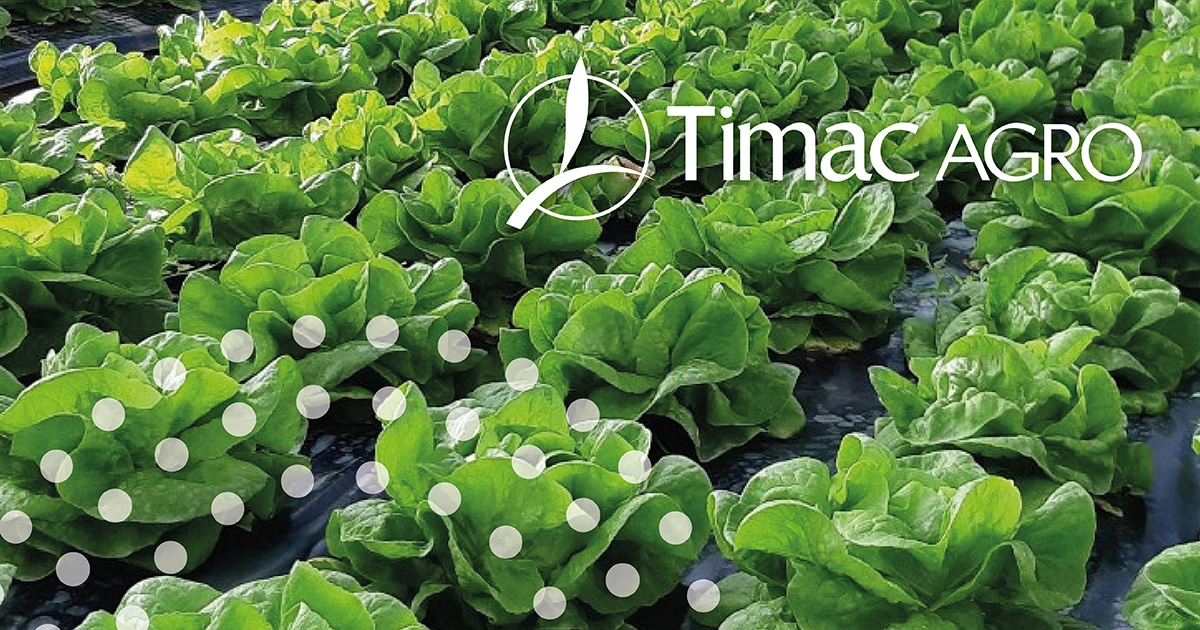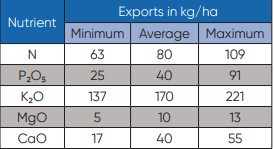How to optimize lettuce yield by accelerating vegetative growth?

80 kg/ha It’s the average nitrogen exportation needed in Batavia lettuce.
Lettuce is a leafy vegetable, characterized by a very short cycle and a very fast vegetative growth, which requires a particular attention for its nitrogen supply. Unbalanced nitrogen supply (too much or not enough) will have a negative impact on growth and final yield. To maximize the yield, one should focus on two parameters: optimization of the vegetative growth (directly linked to nitrogen uptake), and limiting losses due to quality (marginal and
terminal necrosis, burns due to ammonia release excess…).
To ensure the optimum development of lettuce, it is necessary to provide a balanced nutrition. Plants generally require N in the largest amounts compared to all plant-essential nutrients. Nitrogen promotes rapid growth and increases lettuce’s size and quality. It is also an essential part of the chlorophyll manufacturing process through photosynthesis (Doerge, Roth, and Gardener 1991). Moreover, nitrogen is directly link to protein synthesis by the plant metabolism and therefore a key element for quality. In the table beside is an example of nutrients exports needed on batavia lettuce.
Nitrogen uptake reaches 20% of total exports at mid-cycle and intensifies in the second part of the cycle. The formation of fresh matter takes place in the last third of the cultivation cycle.(CTIFL & Serail, lettuce, J.-P Thicoïpé, 1997)
Nitrogen can be absorbed by the roots in nitric or ammoniacal form. The main uptake is in the nitric form because this form is generally predominant in the soil. The increase in nitrogen inputs is not always valorized by the crop in terms of yield, that is why it is important to have a reasoned management of nitrogen fertilization.
NITROGEN DEFICIENCY CAUSES:
- A slow down of the growth and development of plants. Initially, the primary roots are fewer and longer. The plants appear stunted and are lighter green.
- Yellowing (chlorosis) of older or lower leaves occurs. This is followed by leaf tip death and leaf margins developing a brown discoloration (necrosis). In some instances the leaves fall off. The leaves and roots become tough, depressing the quality.
EXCESS NITROGEN CAUSES:
- Decrease of the quality of the salads produced.
- Increase susceptibility to diseases (botrytis, Rhizoctonia) by weakening the cells.
- The vitriescence (alteration of the cells walls) of the pivot and the marginal necrosis on all types of lettuce.
- Environmental losses trough lixiviation, denitrification or volatilization.
Nitrogen fertilization management is a key parameter to optimize vegetative growth in lettuce, directly linked to the final yield. TIMAC AGRO has developed specific solutions to answer this agronomical issue.
TIMAC AGRO technologies can increase nitrogen availability, improve its absorption, transportation and efficiency and improve the crop yield and quality!
